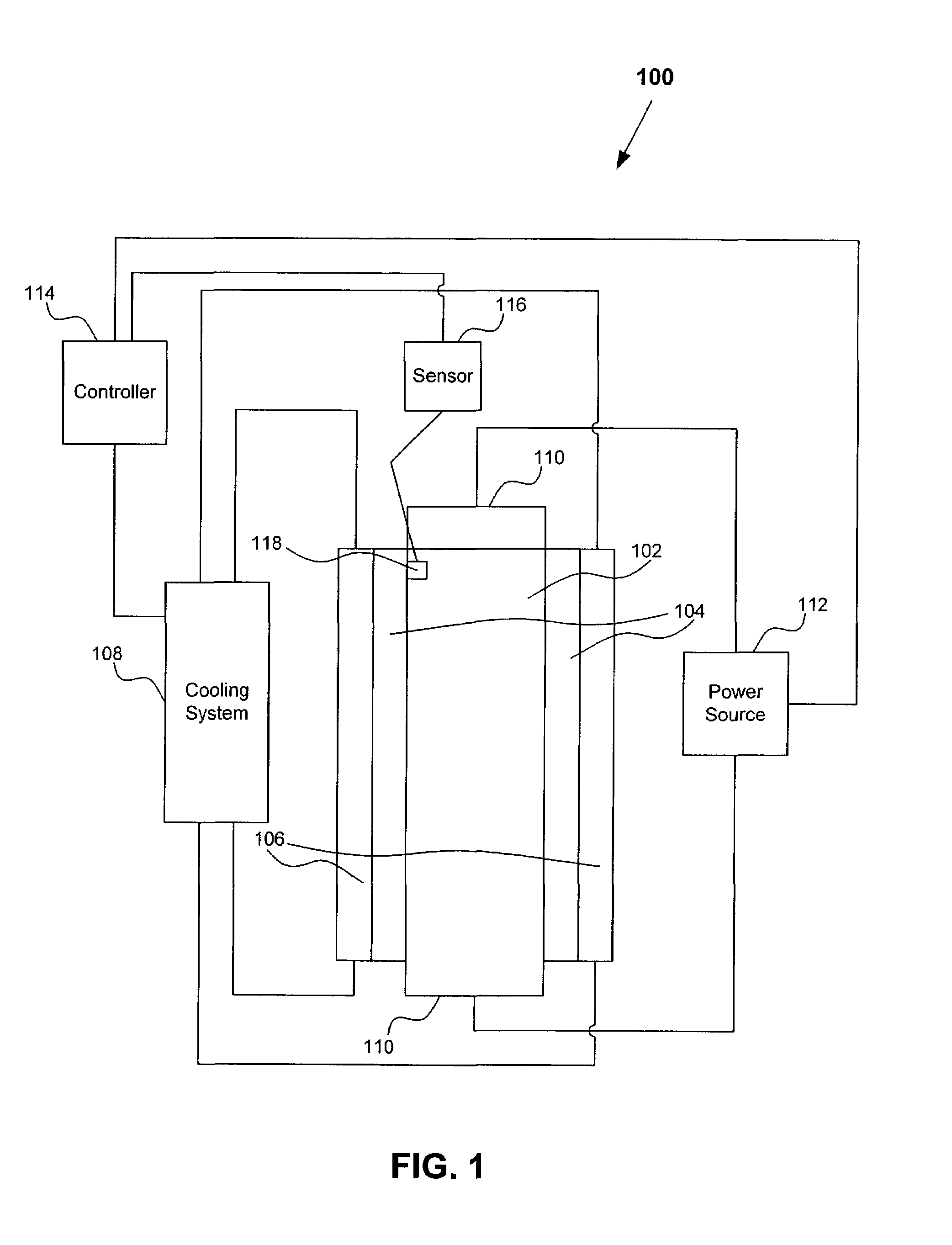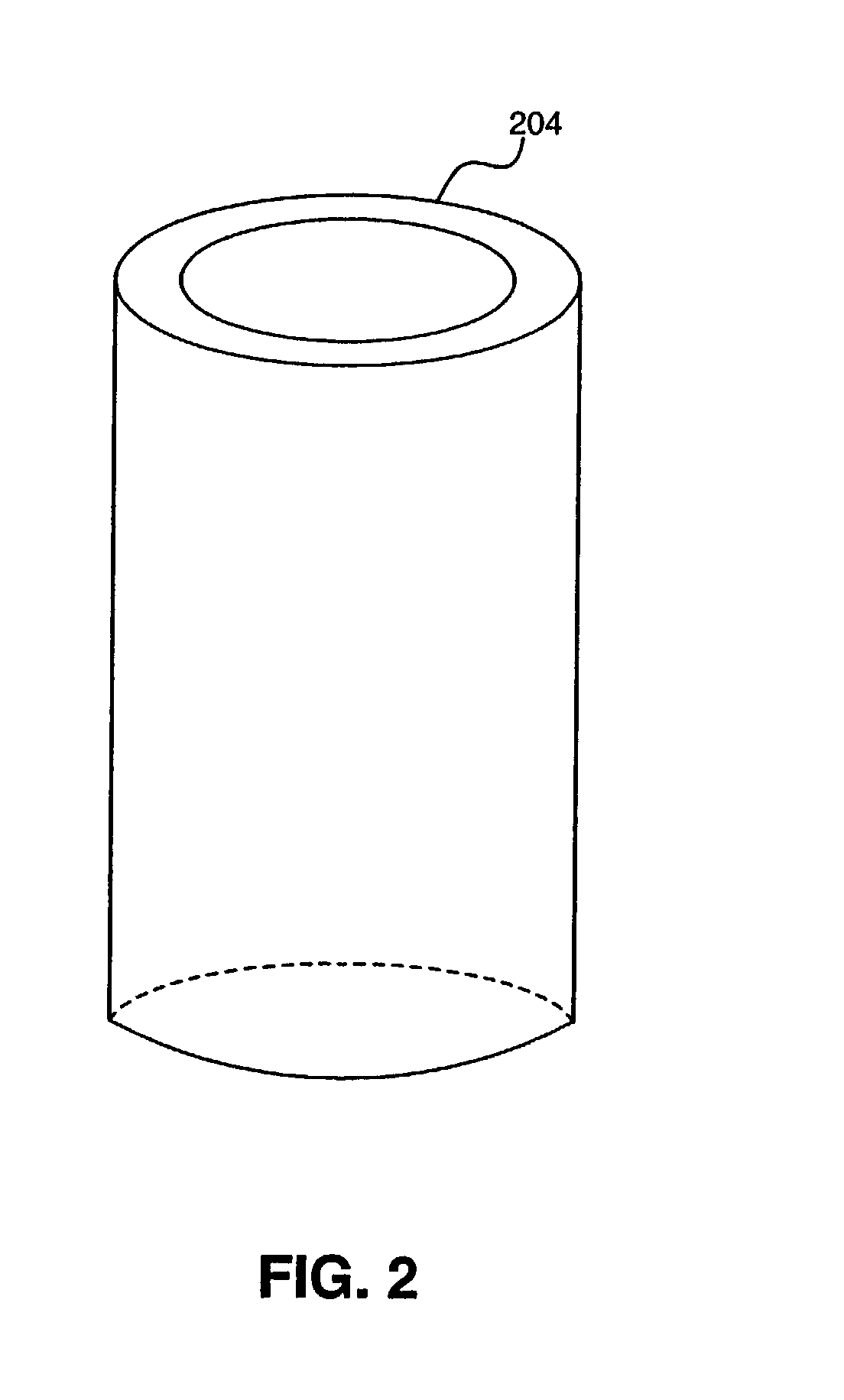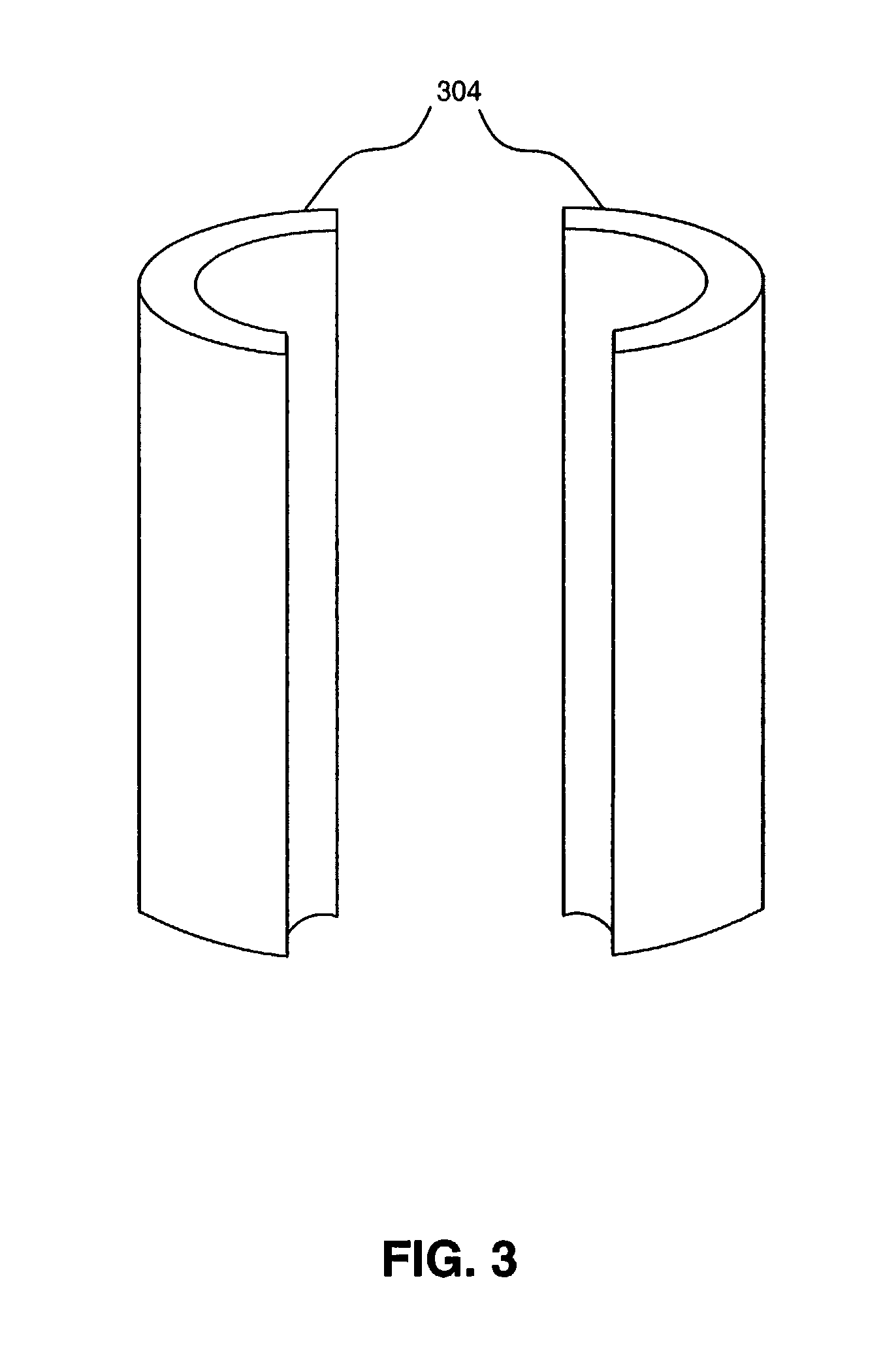Materials and methods for detection and characterization of nucleic acid sequence variability
- Summary
- Abstract
- Description
- Claims
- Application Information
AI Technical Summary
Benefits of technology
Problems solved by technology
Method used
Image
Examples
Example
Example 1
Construction of the DNA Pointer System
[0116]FIG. 1 illustrates an electrophoresis temperature control system (e.g., a DNA Pointer System) 100 according to embodiments of the present invention. System 100 can be used to control temperature of a gel 102 during an electrophoresis process. Gel 102 can be held through use of holding structures (e.g., glass, plastic, or ceramic semi-circular supports, rods, any shaped plates, capillaries, etc.) 104. Although holding structure 104 is shown to be a planar plate in FIG. 1, as shown in FIGS. 2 and 3 a cylindrical structure 204 or a semi-circular structure 304, respectively, can also be used. Thus, the gel 102 can be held in any shape desired by an operator. A heat exchange module 106 is coupled to each holding structure 104. Heat exchange module 106 is also coupled to a cooling system 108. Cooling system 108 transmits and receives cooling medium (e.g., cooling fluids, or the like) that pass through heat exchange module 106. Holding s...
Example
Example 2
The Influence of Gel Temperature on the Detection of Single Nucleotide differences by the SSCP Method
[0126]FIG. 4 presents two hypothetical nucleic acid molecules which possess the same number of base pairs. The first is a wild type sequence which possesses three different local energetic minima under particular physical conditions, represented by A′, B′, and C′ on the plot (FIG. 4A). The second sequence is a mutant sequence that differs in a single base pair compared to the wild-type sequence. The mutant sequence also possesses three different local energetic minima, represented by A′, B′ and C′ on the plot (FIG. 4A). The energetic minima is related to a high probability of forming one or more stable 3-D conformers under those physical conditions. In contrast, the energetic maxima, represented by A, B, and C on the plot, is related to a low probability of forming one or more 3-D conformers (FIG. 4A). Due to the similarity in the energetic minima of the mutant and wild-type...
Example
Example 3
Detection of a Single Nucleotide Difference in the Exon 7 of Human PAH Gene; using MSSCP Analysis
[0135]In order to evaluate the effect of the gel temperature changes during native electrophoresis on the electrophoretic mobility of ssDNA fragments, and compare the effectiveness of the MSSCP method over the standard SSCP approach, eight different sequenced SNPs from exon 7 of the human PAH gene were selected for analysis.
Amplification of Exon 7 Phenyloalanine Hydroxylase Human Gene
[0136]DNA preparation to amplify fragments from exon 7 of the human PAH gene was performed using standard procedures. Exon 7 was amplified by PCR reaction using primers AP287, 5′-TGCCTCTGACTCAGTGGTGAT-3′ (SEQ ID NO:3) and AP423, 5′-CCCAAACCTCATTCTTGCAGCA-3′ (SEQ ID NO:4). PCR reactions contained 100 ng of genomic DNA as a template, 50 mM Tris-HCl, 50 mM MgCl2, 2 MM of each primer, 0.2 mM of dNTPs, and 2U / 100 μl of Taq polymerase (Kucharczyk Inc., Warsaw). PCR was performed in 25 μl cycling condition...
PUM
| Property | Measurement | Unit |
|---|---|---|
| Temperature | aaaaa | aaaaa |
| Dimensionless property | aaaaa | aaaaa |
| Dimensionless property | aaaaa | aaaaa |
Abstract
Description
Claims
Application Information
 Login to view more
Login to view more - R&D Engineer
- R&D Manager
- IP Professional
- Industry Leading Data Capabilities
- Powerful AI technology
- Patent DNA Extraction
Browse by: Latest US Patents, China's latest patents, Technical Efficacy Thesaurus, Application Domain, Technology Topic.
© 2024 PatSnap. All rights reserved.Legal|Privacy policy|Modern Slavery Act Transparency Statement|Sitemap



